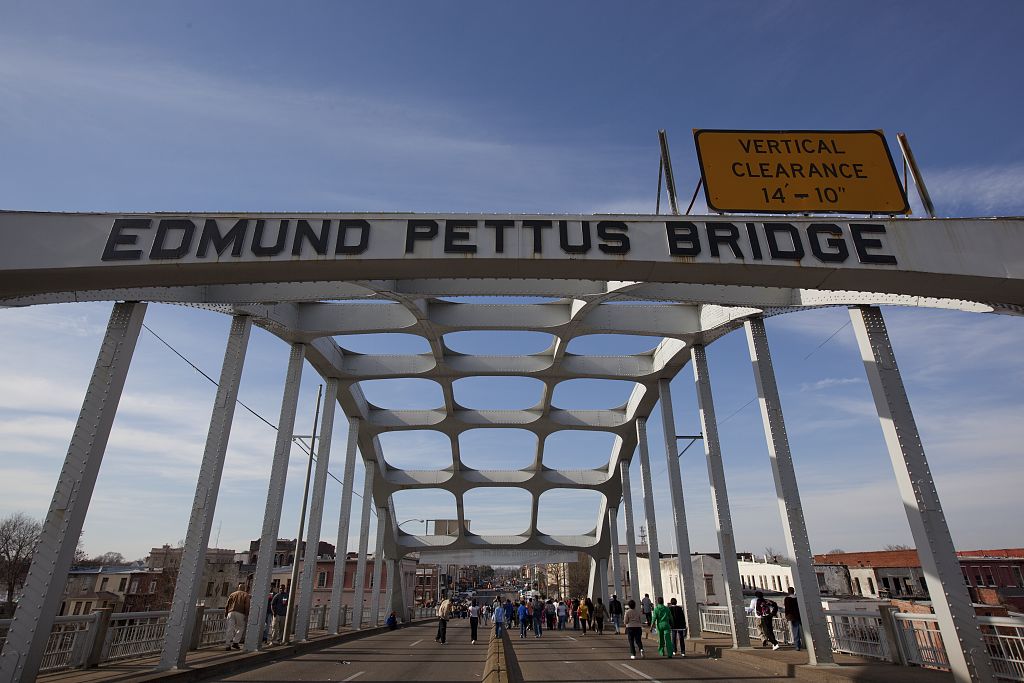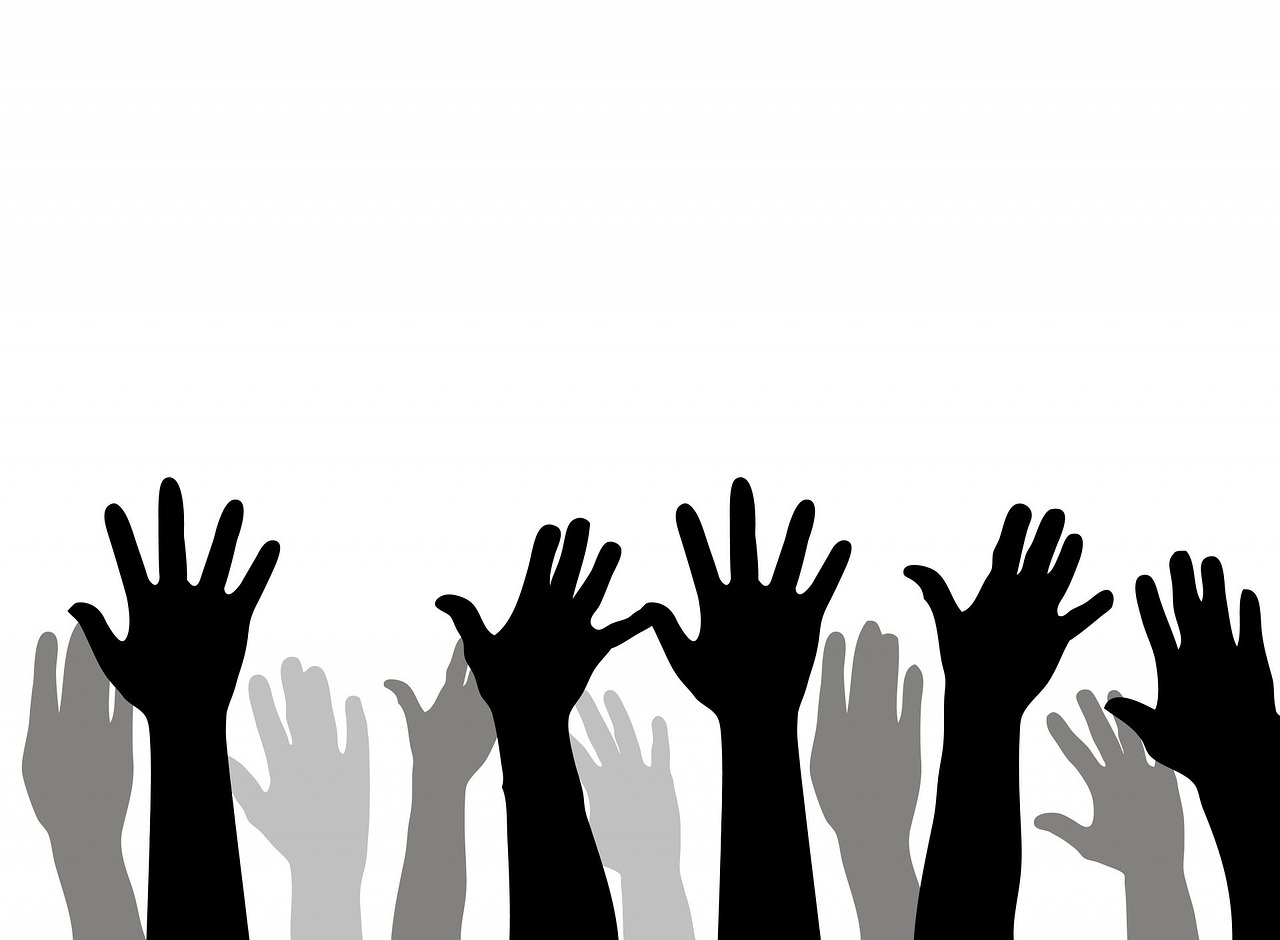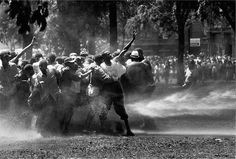
It was a Sunday of worship when those gathered were paying homage to the efforts and sacrifices of the civil rights movement. It could have been the Sunday before the MLK Jr. holiday. It could have been the fiftieth anniversary of an important milestone in the civil rights struggle: the March on Washington or crossing the Edmund Pettus Bridge in Selma, Alabama. Maybe it was a Sunday in February, when our nation tries to squeeze all the history of a magnificent peoples into the month with the fewest days.
The choir had sung We Shall Overcome, which holds great resonance for the adults, given its holy purpose to encourage and console those who laid their bodies on the line for freedom. Even if they had been taught to sing it for Black history month in school, such the history behind the song is largely lost on these littlest ones.
Knowing this, the minister had decided to talk with the children about the song during worship. Because she knew children are smart, but aren’t always knowledgeable, she risked asking the gaggle what the title meant. Her voice gentled, “What does it mean, ‘We Shall Overcome’?”
 Little bodies became restless and hands stuck straight up in the air. A couple spoke ideas that did not hit the mark so well. One offered a response with which most adults would concur. Then, a six-year-old offered a different perspective.
Little bodies became restless and hands stuck straight up in the air. A couple spoke ideas that did not hit the mark so well. One offered a response with which most adults would concur. Then, a six-year-old offered a different perspective.
Do you know that moment when you hear a word or a phrase, but you are actually mishearing it, but you don’t know it yet? Still, whatever imprecise thing that you hear turns out to have an unforeseen ring of truth?
This six-year-old child, to answer the minister’s question, said it means we shall overcalm.
Overcalm.
Can you hear how those two words, depending on where you grew up and what your accent is, might sound similar?
Overcalm.
The thing is, that child got it right.
For those foot soldiers practicing non-violence in the face of Southern racist brutality – biting dogs, water hoses, Billy clubs, tear gas – they had to be overcalm – hyper-peaceful – in order to overcome.

President Obama recently reminded the nation in his glorious speech at the foot of that infamous bridge in Selma, still ignobly named for a KKK grand dragon, that before crossing that metal and concrete span, the marchers were schooled in the reality of what they would face: how tear gas affects the body. They learned how to protect internal organs from mortal damage during a beating. They learned how to stay calm in the midst of a violent onslaught.
The philosophy behind and underneath and throughout Dr. King’s non-violent approach to freedom was based on Gandhi’s vision and strategy of Satyagraha. A Sanskrit word, Gandhi developed this in his non-violent campaigns in both South Africa and India. According to the folks at The Metta Center for Non-Violence,
Satyagraha can be understood as the vast inner strength or “soul force” required for nonviolent acts. Gandhi never defined nonviolence as passive resistance because he saw nothing passive about what he was doing. He believed that a dedicated
adherent to nonviolent resistance by taking authentic action to represent truth and working to uphold a just cause would inevitably reach the heart of the oppressor. Satyagraha is a positive and spiritually based form of resistance that starts in the heart of the resister and inevitably produces creative action.
In the 1950s and 60s, Satyagraha was refined for an American context using the power and wisdom of the Black church. Like its South African and Indian versions, American non-violence adherents are required to connect to a deep peacefulness in the face of violence. That deep peace is wider and more immense than any one individual can attain or create on their own. It is a peacefulness that is co-created by those who practice it at any one time, and across time, fueled by the holy spark of Mystery that surrounds us at all times.
Oh, how I wish that overcalm had been available to these police officers who keep shooting unarmed Black and Brown men – unarmed anybodies. Oh, how I lament that Darren Wilson did not access some overcalm so that he could have seen an unarmed 18-year-old man in front of him, instead of a demon, when he shot and killed Mike Brown in Ferguson that hot day last August.
In fact, I do believe it is available. I believe it is available to all of us. Available to you and available to me. I believe it is available even to Darren Wilson and Daniel Pantaleo (who killed Eric Garner) and George Zimmerman who killed Trayvon Martin and…this list goes infuriatingly and tragically on.
It’s actually not my belief, or a belief, but fact. There is a new study with evidence that mindfulness, another concept from the same realm where Satyagraha and overcalm resides, might hold a key to interrupting the split-second process in the human mind that leads someone from first seeing a person and then, without realizing it, beholding a demon. The study explores what is called “implicit bias.” It asserts that
Mindfulness meditation caused an increase in state mindfulness and a decrease in implicit race and age bias.
Though this doesn’t impact systematic or structural racism, which desperately needs dismantling, this is still powerful news. This says there is an available strategy to increase our capacity to notice when we are “othering” people – turning them into non-entities upon which we can project our insecurities and fears, the ground of which racism and sexism and other oppressions grow like noxious weeds, and from which lethal violence springs.
One of the most powerful shifts in perception that has come to me in the past half year or so is that the eruptions in our nation are not originally about Black rage, though that is present as a response. At its root, it is about White rage against progress, as Carol Anderson so powerfully describes in this OpEd piece from the Washington Post:
Protests and looting naturally capture attention. But the real rage smolders in meetings where officials redraw precincts to dilute African American voting strength or seek to slash the government payrolls that have long served as sources of black employment. It goes virtually unnoticed, however, because white rage doesn’t have to take to the streets and face rubber bullets to be heard. Instead, white rage carries an aura of respectability and has access to the courts, police, legislatures and governors, who cast its efforts as noble, though they are actually driven by the most ignoble motivations.
White rage recurs in American history. It exploded after the Civil War, erupted again to undermine the Supreme Court’s Brown v. Board of Education decision and took on its latest incarnation with Barack Obama’s ascent to the White House. For every action of African American advancement, there’s a reaction, a backlash.
As a white person, I don’t have a say about how people of color choose or do not choose to respond to the injustices in their lives. I am a huge fan of non-violence and compassion, but I am also aware that in this struggle, my role is to listen and is to support.
I do, however, have ~ pun intended ~ skin in the game when it comes to how white privilege and white supremacy get played out and how they get stopped. If there is a strategy ~ like mindfulness ~ that would interrupt microaggressions and use of lethal force, then we must recognize this, spread the word, practice it in our own lives and increase access to others (especially people with guns in their hands — because it’s not just cops who kill unarmed people of color — think Renisha McBride).
Out of the mouth of babes comes such necessary wisdom, the deep meaning of overcalm: to exercise an inner peacefulness that connects us to a great source not of our making, available to all and especially available to those seeking justice on behalf of those treated unjustly, especially for moments and movements like this, especially for those seeking to create the Beloved Community.
Let us listen to children. Let us all cultivate overcalm. Let there be peace, but first let there be justice.
May it be so.
One thought on “Out of the Mouths of Babes”